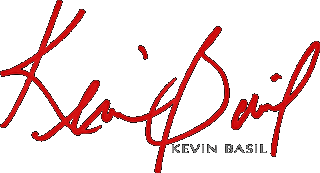Advent or Not-Advent
Warning: Undefined property: linknotes::$are_links in /var/www/vhosts/basil/kbsite/blog/wp-content/plugins/linknotes.php on line 73
On the OrthodoxPSALM mailing list, a particpant writes, “Isn’t this Advent?”
This is perhaps an eccentric thorn for me, but I would be interested to hear the opinions of others, especially opinions that consider translation issues.
No, it is not Advent. It is variously termed “the Nativity fast,” “the Christmas fast,” “the Winter fast,” “Winter lent,” or “St. Philip’s fast.”
Advent is a season that begins the first Sunday after the Sunday of Christ the King, the last Sunday of the Church year in the West. Advent, then, marks the beginning of the Church calendar in the West.
The calendars of the Orthodox Church begin on September 1.
Advent is made up of the four Sundays preceding Christmas. (Christ the King thus falls on the Fifth Sunday before Christmas every year.) The themes of the four Sundays are taken from the readings for that day (which include an Old Testament lection which is often key in understanding the day). The second Sunday before Christmas focuses on St. John the Baptist, the last on the Mother of God.
The Christmas fast begins on November 15, and thus includes a total of six Sundays. The second Sunday before Christmas is the Feast of the Fathers, the last is the Feast of the Fore-fathers. The readings for the other four Sundays are drawn from the post-Pentecostal cycle and are unrelated to Christmas. Orthodox lectionaries do not include Old Testament readings for the Divine Liturgy.
One of the central liturgical rites of Advent is the Advent Wreath: three purple candles, one rose, and one white. The three purple candles are lit on the first three Sundays of Advent, the rose on the last (rose having been chosen to symbolize the Mother of God). The white candle rests in the center and is lit on Christmas day. The candles remain lit throughout the Christmas season (Dec. 25-Jan. 5, Epiphany eve).
The Christmas fast has no similar rite, except when it is borrowed. The resulting wreath is either four candles or six. If four, what does one do with the previous two Sundays, and how does one explain why there are only four? If six, it looks dreadful compared with the symmetry and simplicity of the Advent Wreath.
Advent is a completely different season, and it is not the Christmas fast liturgically. (Most Western Christians do not fast during Advent, needless to say.) I love Advent, myself, and I miss it a great deal. But it helps no one to make a hybrid of the two when they are so totally dissimilar. It is even less helpful to call one season by a name that describes another. They are not even remotely similar. They both precede Christmas; there the similarity ends.
What say you?
